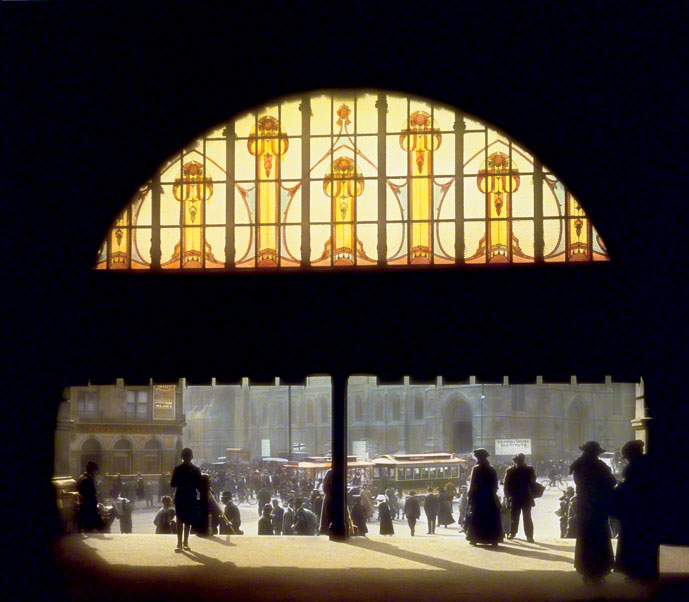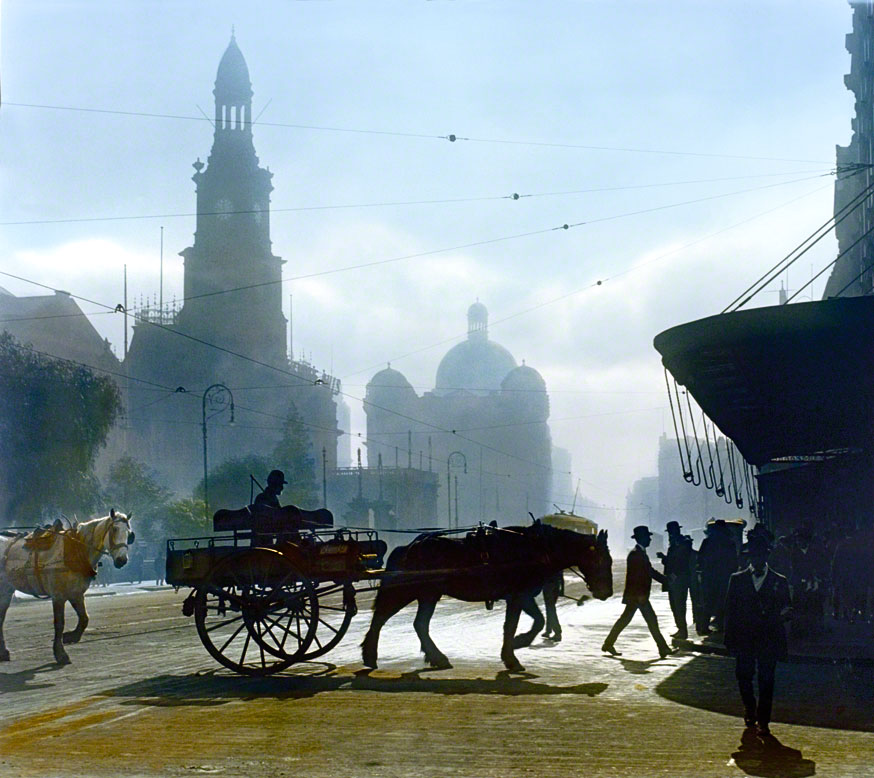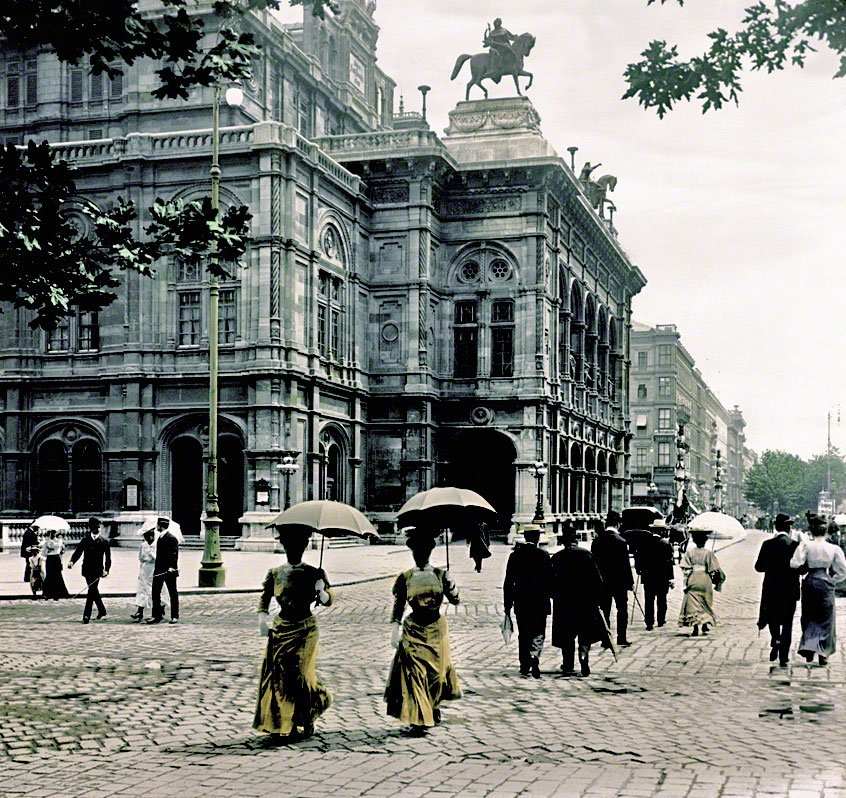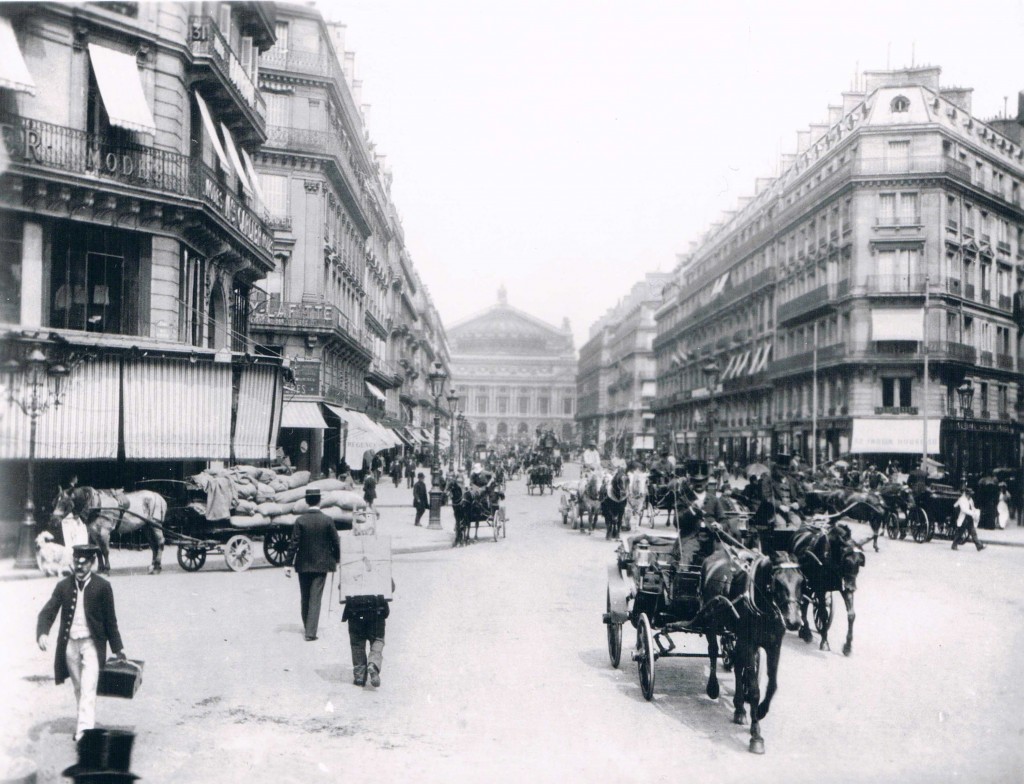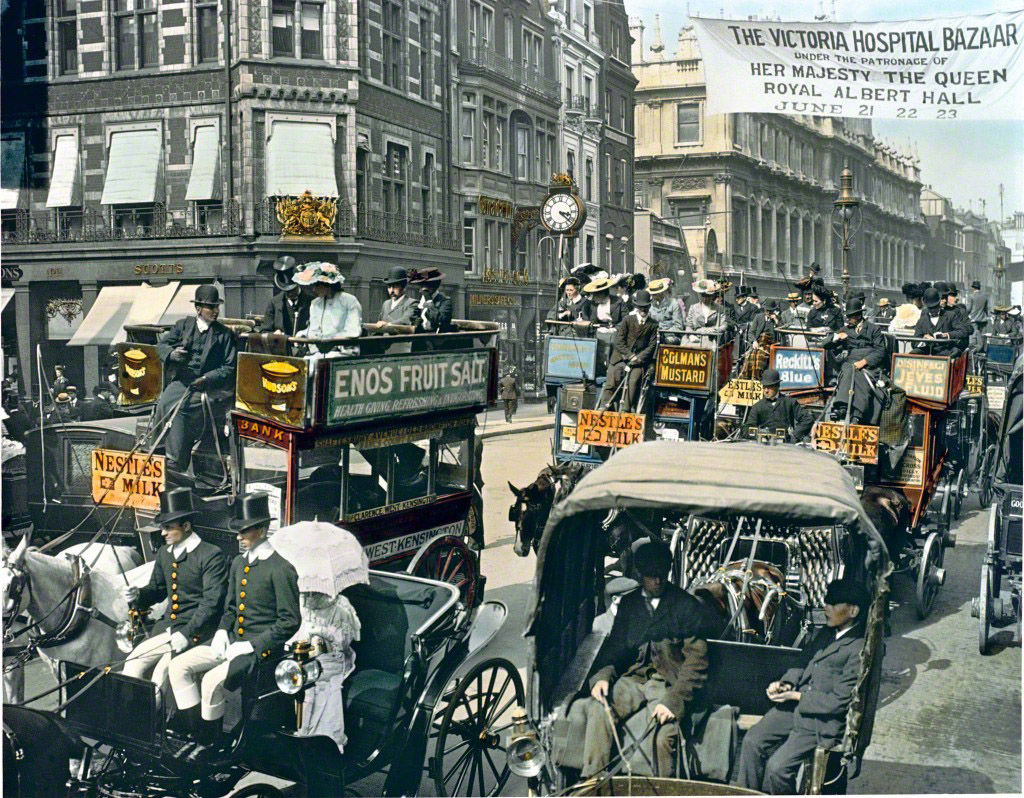Evocative images of cities past, 'reclaiming the urban memory'

Posted September 9, 2010 at 1:24PM
As some readers may know, I occasionally cross-post from this blog to a few other excellent sites, including Huffington Post, DailyKos, Sustainable Cities Collective, Rooflines, and CNU Salons, all of which I recommend, as well as some others who are authorized to reproduce my work at their election. I am honored to be in each. Today, I am going to turn the tables and cross-post in the other direction; this piece (posted by me but mostly written by a talented friend) appeared yesterday in Huffington Post:
___________________
Every now and then we are privileged to come across strikingly evocative art that is powerful enough to change our perspective on the world around us, at least for a period of time. Indeed, one might argue that that is the very purpose of art.
Such is the case with the works below from urban photographer Burton Holmes, taken roughly a century ago. I found them through a review of Holmes's oeuvre by my friend Chuck Wolfe, like myself a lawyer and urbanist who loves images. Chuck first posted what follows on his very interesting blog myurbanist, and he has kindly agreed, with the cooperation of the Burton Holmes Historical Collection, to allow me to reproduce his review here.
___________________
THE OLD IS NEW AGAIN
Melbourne, Flinders Street Station, 1917 ©2006 BHHC
"What has been is what will be, and what has been done is what will be done; and there is nothing new under the sun." (Ecclesiastes 1:9)
The Great Recession, climate change and the quest for carbon neutrality have reoriented how we look at cities, the distance between home and work, and the role of the automobile. A simultaneous, street-based nostalgia targets simpler times, a more human scale and an elusive world of accessible neighborhoods often lost in the memories of previous generations. Consider imagery which restores such lost urban memories for those who did not witness modern urban history, and recreates what political writer Alexander Cockburn has termed "the lost valleys of the imagination". Such "lost valleys" often grace nearby bookstores and online forays, but quality varies, and frustrates our romantic search to turn back time. 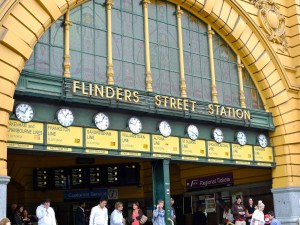 Of all available resources, amid blogs and information byways, no visual record is more compelling than the archived work of seldom remembered, but innovative documentary pioneers, who left behind breathtaking records of camera artistry: pictures revealing moments when people hardly understood the camera as it recorded the profound change which surrounded them.
Of all available resources, amid blogs and information byways, no visual record is more compelling than the archived work of seldom remembered, but innovative documentary pioneers, who left behind breathtaking records of camera artistry: pictures revealing moments when people hardly understood the camera as it recorded the profound change which surrounded them.
One such pioneer, Burton Holmes, preserved imagery in unparalleled human scale, first with black and white, glass negatives, often hand-colored with fine, single hair ermine brushes and through parallel use of motion pictures from the time of their invention. He showed all that a city can be—while also depicting the changing form and appearance of infrastructure, public spaces and the impact of this change on urban residents. His legendary work, which entertained the captive opera-goers in front rows and the general admission crowds in the rear, is well-chronicled in the work of Genoa Caldwell (The Man Who Traveled the World and Travelogues: The Greatest Traveler of His Time, recently republished as Early Travel Photography), as well as by other devotees, and can be readily reviewed in print and online (including the most resource-intensive compilation at burtonholmes.org).
Holmes was not an intentional urban historian. He became a famous stage presenter, who, from the late nineteenth century until the 1950's, inherited a showman's tradition from previous travel lecturers and became synonymous with the new word, "travelogue," which he favored to stimulate vicarious interest in his art. He brought the first motion picture cameras to the Far East, recorded Tolstoy and the coronation of Ethiopian Emperor Haile Selassie and otherwise roamed the world--often to places of danger where a camera had never been-- and brought home both organic, natural portraits of life abroad and entertaining still and cinematic visions to halls across America.
"100 years from now I wonder if those in the future who view these images will appreciate the value of ... pictures as a means of recording life as is lived in this century... photography is in the truest sense biography --is it not the writing of life in a truly universal language?"
-Burton Holmes, Seoul, Korea, 1899
However, over and above Holmes' published travelogue narratives, a particularly intentional urban documentary purpose flows from his photos, as depicted above and below. Photo-archivist and biographer Caldwell has shared hints of this perhaps subconscious resolve in quotations she has compiled in the over 30 years she has devoted to her research. An example of one reference she has found that holistically describes urban ambiance addresses Berlin in 1907. Holmes noted Berlin as a city of contrasts, where the traveler feels the unseen presence of something fine and beautiful, and it is cleanliness, he said, that pleads most eloquently for Berlin. There, he described how the art of municipal housekeeping is practiced in perfection: "Berlin is the best-kept great city in the world--there are no backyards in Berlin, [and] balconies filled with flowers ornament the buildings, [while] outdoor cafes give impressions of cheerful sociability, and the traveler is confirmed in his impression that Berlin is a city beautiful." Holmes' cameras captured far more than the order he saw in Berlin; he chronicled the impact of new forms of transportation as it was introduced to classical environments, and the resulting evolution of streets and ways of life.
BeIow is a sampling of the collection maintained by Burton Holmes Historical Collection (BHHC), reprinted by myurbanist with special permission and under copyright of BHHC. Caldwell has archived 1700 of an assemblage which once numbered 30,000 photos, the rest lost to the poor condition of time. A range of movie footage, from 200 film cans rediscovered in 2003, now resides at George Eastman House in Rochester, New York.
A mode we have lost?
A captivating horse and buggy amid Melbourne's clouds shows a morning routine now lost in Western culture today. Holmes was fascinated by the expanse of the Australian continent and the impact of colonization on native people and place.
Melbourne, 1917 ©2006 BHHC
A mode to regain
A grand Austrian urban stroll provides a model for emulation. Holmes regaled in the "superb edifice" of Vienna's Grand Opera House, while his camera prioritized the pedestrian view.
Vienna, 1907 ©2006 BHHC
Street scenes and carriage jams
Traffic congestion took different forms, often without protection from the elements. Holmes' photographs were rich with street scenes in world cities. Consider the different social nature of traffic interactions without doors or windows and the different sounds that graced the street.
Paris, 1895 ©2006 BHHC
London, 1897 ©2006 BHHC
For the rest, including nine more striking photos, go here.
________________________
(Please scroll over photographs for credit. Except where indicated, all photographs ©2006 BHHC. Restricted use. Do not copy.)
